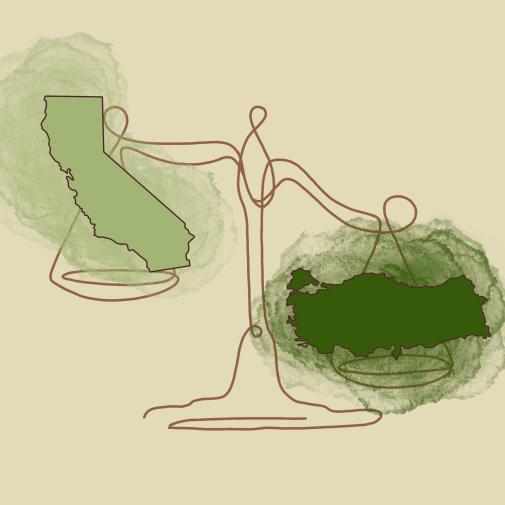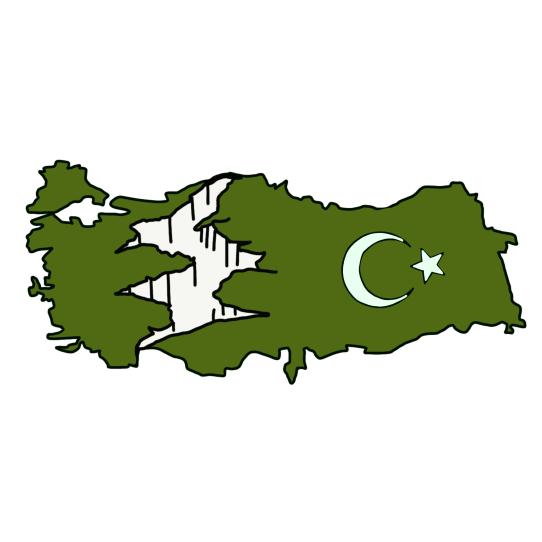Earthquakes prove to be one of the most unique and dangerous natural disasters due to their unpredictability and invisibility. While people do not consistently fear them, even the slightest tremor can lead to panic, especially near fault lines. Fault lines, or the boundaries between tectonic plates, mark the areas that are prone to violent earthquakes. California and Turkey have some of the most relevant fault lines, with the former’s infamous San Andreas Fault and the latter’s North Anatolian Fault. Both fault lines, while similar in some aspects, hold their own secrets and dangers.
Geologists classify the San Andreas Fault as a slip-strike fault, due to the way the Northern Pacific and North American plates collide. The former collides against the latter in a way that is also classified as a right-lateral fault. The SAF extends over 800 miles – about 14,080 football fields – from the Gulf of California to around San Francisco. While no reliable way of predicting seismic activity exists, researchers have noticed that an earthquake of about magnitude 6.0 comes every 22 years. The most recent ones have been in 2004 with a magnitude of 6.0 and 1989 with a magnitude of 6.9. The latter especially caused significant damage in areas like Monterey; it resulted in about 60 deaths, thousands of casualties, and billions of dollars in damages. It is also worth noting that not only is the earthquake itself extremely dangerous and deadly, but the aftershocks too. These may come moments or even days after the original earthquake and catch people by surprise. The San Andreas Fault produces some of the most deadly earthquakes, not unlike recent seismic activity in Turkey.
The North Anatolian Fault falls in the same category as the San Andreas Fault; it too is a slip-strike and right-lateral fault. The collision happens between the Eurasion and Anatolian-Aegean plates. The NAF’s size rivals the SAF’s, as it stretches over the Marmara Sea well into the east of Turkey. The transform’s irregular seismic activity leaves no hint of when the next earthquake can occur. The last earthquakes in 2022 had a magnitude of 6.1 and the ones in 1999 had a magnitude of 7.2. The most recent earthquakes significantly extended the fault line westward into the Marmara Sea, which exponentially increases the areas impacted whenever an earthquake occurs. The North Anatolian Fault’s unpredictability and immense size means it has the potential to produce a deadly earthquake at any moment.
The San Andreas Fault and North Anatolian Fault are both active fault lines with sizes that surpass most others. With a history of incredibly high magnitude earthquakes, both leave neary-inhabitants cautious and wary of incoming activity. To combat this, California, Turkey, and other countries at risk of high-magnitude earthquakes have been working to boost infrastructure and figure out ways to minimize damage. For example, students undergo earthquake drills in order to be informed of what to do in the case of a disaster. The SAF and NAF are forces to be reckoned with, and their mere presence is enough to leave people with a sense of unease.
Sources:
Andrei, Mihai. “The San Andreas Fault — What It Is, Why It Matters, and What You Should Know about Its Earthquakes.” ZME Science, 26 Oct. 2022, https://www.zmescience.com/science/the-san-andreas-fault-what-it-is-why-it-matters-and-what-you-should-know-about-its-earthquakes/. Accessed 7 March 2023.
Britannica, The Editors of Encyclopaedia. “San Andreas Fault”. Encyclopedia Britannica, 12 Jan. 2023, https://www.britannica.com/place/San-Andreas-Fault. Accessed 7 March 2023.
Written by Joyce Rizko
Editted by Raquel Rybakova

 Turkey-Syria Earthquake and Its Impact on Mental Health
Turkey-Syria Earthquake and Its Impact on Mental Health